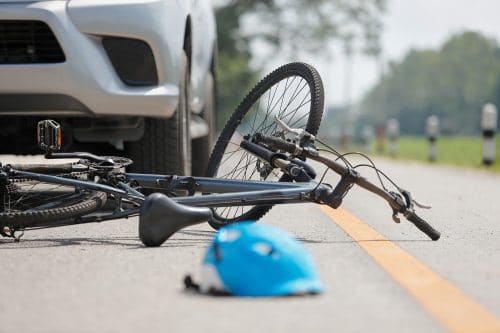
Many people who ride their bikes on a regular basis say that they will do anything they can to avoid intersections. This may be more reasonable than it seems, as nearly 60% of accidents involving bikes and cars happen at intersections. Keep reading to find out who is at fault in these accidents, then contact The Law Offices of Larry H. Parker at 800-333-0000 if you have grounds for a personal injury claim.
Fault in Bike and Car Accidents
In most cases, bikes move more slowly than cars, and people on bikes are much more likely to be seriously injured than those in the vehicle. For this reason, it is often the case that people assume that the car driver is more likely to be at fault. Surprisingly to some, this is not always the case. Remember that those on bikes are required to follow the rules of the road. They are responsible for looking out for motorists.
A person on a bike should be aware that their bikes are smaller, less visible, and more likely to not be noticed. They should wear bright clothing and otherwise increase their visibility by wearing clothing that is reflective or having their bike equipped with lights on the front and back. They should also consider other issues that could prevent a person in a car from seeing them, such as the sun, rain, or darkness.
Liability in Bike and Car Collisions
Bikes and cars are both vehicles. When there is a collision between the two of them at an intersection, the law is generally on the side of whoever had the right of way. If there were no traffic signals then there are numerous rules that affect who is liable. The bike rider must always be riding with traffic – never against it, whichever vehicle gets to the intersection first has the right of way, and if they all get to the intersection at the same time, whoever is on the right has the right of way.
If the main street intersects with a side street, the vehicle that is on the major thoroughfare has the right of way. Both cars and bikes are required to make full stops at stop signs or blinking red lights before they continue. However, note that a bicyclist does not have to “put a foot on the ground” to be considered completely stopped, as many people believe.
Both Parties Have a Responsibility to Protect Themselves and Others
Of course, cyclists are likely to take extra precautions because they are in increased danger. They should act defensively at intersections and should wear a helmet and other safety gear. Car drivers, for their part, should check their mirrors, their blind spots, and be sure they are coming to complete stops before proceeding. Whether in a car or on a bike, if you have been involved in an accident, we recommend contacting The Law Offices of Larry H. Parker at 800-333-0000 for a free legal consultation.



